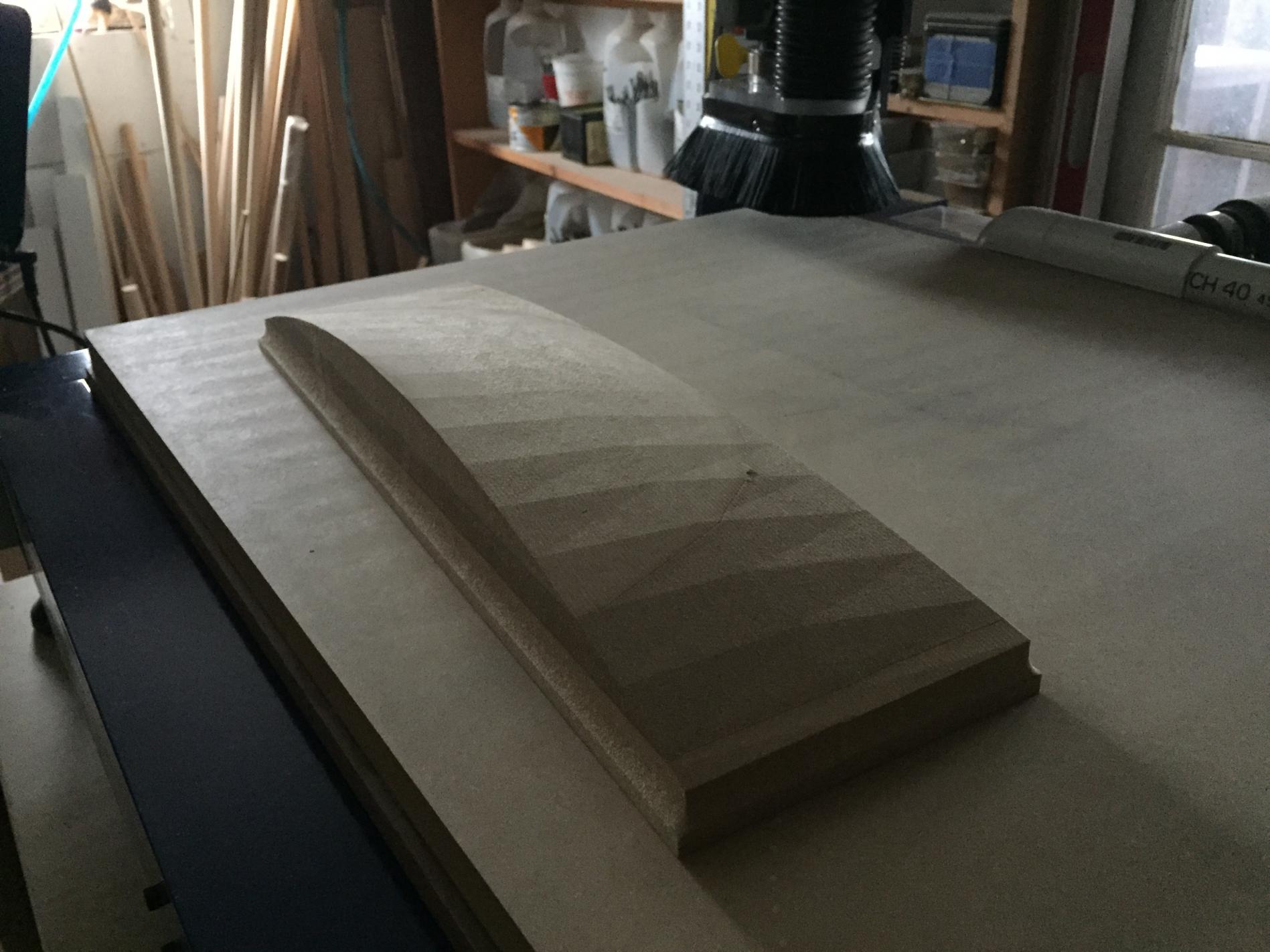First time I've tried importing a Rhino 3D model into VCarve, a simple form for vacuum molding. In Rhino it's a completely smooth NURBS object. When I brought it into VCarve, it looked like it had facets, but I assumed those were due to simplified rendering. So I cut it. Big surprise! The cut part had facets, just like the preview.
I assume that VCarve meshes the NURBS object on import. The mesh was too big for the VCarve smoothing filter, so I went back to Rhino and exported as STL with very fine mesh setting. Smoother after import, and even better after using the smoothing filter.
It's workable as is, but as a VCarve 3D newbie I'm wondering if I missed something obvious. Is there a better way?



 Reply With Quote
Reply With Quote






